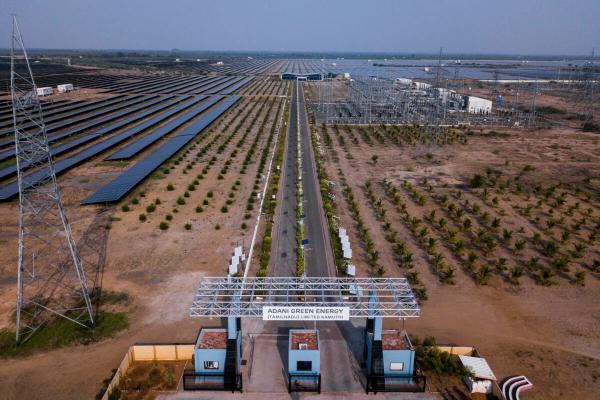When Gautam Adani first set foot in Khavda in 2022, he couldn’t help but joke about the scarcity of mosquitoes in the area. Little did he know that his jest would mark the beginning of a transformative journey for the region. Fast forward to the present day, Adani Green Energy, India’s one of the largest renewable energy companies, is poised to invest approximately ₹1.5 lakh crore to generate 30 gigawatts (GW) of clean electricity in Khavda, Gujarat.
The barren landscape, once devoid of any significant vegetation or human habitation, has now become the gateway to what promises to be the world’s largest renewable energy park. Adani Group’s vision for Khavda extends far beyond merely harnessing solar and wind energy. It encompasses a comprehensive development plan that includes infrastructure for workers, desalination plants to make saline water potable, and essential utilities such as mobile phone repair shops.

At the heart of this ambitious project lies the installation of solar panels capable of converting sunlight into electricity and wind mills designed to harness the region’s formidable wind speeds, which are five times higher than those in the plains. Despite its remote location, Khavda boasts the second-best solar radiation in the country after Ladakh, making it an ideal candidate for large-scale renewable energy projects.
The development of Khavda has not been without its challenges. The region’s highly saline soil and frequent sandstorms posed significant obstacles that required innovative solutions. Adani Group’s engineers had to adapt tractors to operate in the unforgiving terrain, and they devised waterless robotic module cleaning systems to combat the effects of sandstorms on solar panels.
The logistics of operating in such a remote location have also been addressed, albeit creatively. The narrow airstrip, with its makeshift infrastructure, serves as the primary mode of transportation for Adani Group executives shuttling between Mundra or Ahmedabad. Pilots rely on visual aids and navigation systems for landing and taking off, with minimal guidance from the air traffic controllers stationed 160 kilometers away in Bhuj.
Despite these challenges, Adani Green Energy remains undeterred in its pursuit of sustainability and innovation. The company’s ambitious plans for Khavda align with India’s broader objectives of generating 500 GW of electricity from non-fossil sources by 2030 and achieving net-zero emissions by 2070.
The journey towards realizing this vision has been marked by meticulous planning and extensive research. Adani Green Energy conducted a range of studies, including geotechnical investigations, seismic studies, and environmental impact assessments, before embarking on the development of the site.
As Khavda gears up to become a beacon of renewable energy production, it not only represents a significant milestone for Adani Green Energy but also underscores India’s commitment to embracing sustainable solutions in its quest for a greener future. With its vast potential and unwavering determination, Khavda stands as a testament to the power of innovation and perseverance in the face of adversity.
